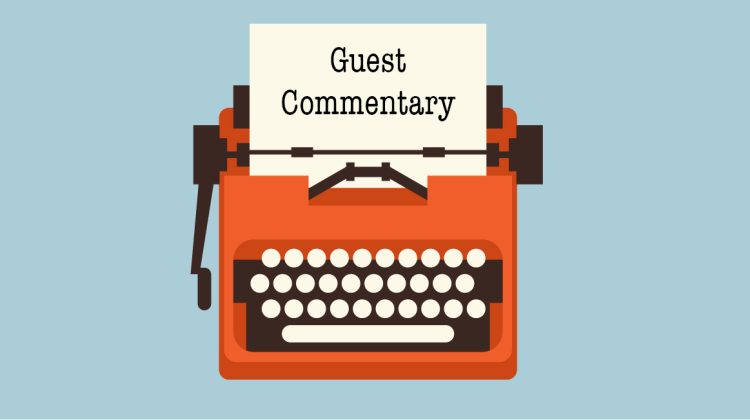Antoinette Burton
Now that summer’s over, I’m back to indoor water aerobics three days a week because the outdoor public pool in my town is closed for the year. I’m sad not to be in the warm morning water, watching the sun come up. But I’m also relieved, because on the nights before our 6 a.m. classes, I’d consult my weather app to see whether rain was predicted and whether class might be canceled. More often than not, the app was wrong. And more often than not, that got me cursing at the app. Why can’t the darn thing reliably tell me if I should get up or sleep in? Don’t we all want to know what tomorrow will bring?
What I was really cursing at, of course, is the uncertain science of predictability. In the context of weather prediction, that has lethal consequences for communities across the U.S., as the 20th anniversary of Hurricane Katrina painfully reminds us.
Yet surprisingly, there’s a lot of optimism these days about weather forecasting.
Jagadish Shukla, a climate science expert, said in a recent interview with Science Friday that three- to five-day forecasts have been steadily improving over the last 40 years. At the center for Predictability and Prediction Research at George Mason University where he works, his colleagues are particularly excited about canonical correlation analysis (CCA), which the website describes as being “like a detective searching for correlations between temperature fields across the U.S., but even better than a detective because CCA is guaranteed to find the patterns with the largest correlation.”
I’m a historian, not a scientist. But I also want to predict stormy weather and the dangers it brings.
So my irreverent, but deadly serious, question is: What if we mobilized the equivalent time, energy, infrastructure and research dollars to develop a fascism predictor app? Ironically, we already have that technology. It’s called the study of history. And historical research relies on two key methods invoked by prediction scientists: the detection of patterns and the probabilities of memory.
What if we had developed an app 20 years ago, around the time that the Southern Poverty Law Center began to track the rise of right-wing, neo-Nazi and other militarized hate groups in the U.S. that opposed civil rights, embraced extremist groups such as the Ku Klux Klan and heralded our present moment?
Research and development investments in a fascism predictor app would have allowed us to use such evidence to map vast numbers of incidents nationwide that were gaining quiet and not-so-quiet steam — processes of detection that would surely have been predictive of the Proud Boys, the Jan. 6 riots and even the militarization of urban police presence via executive order this year.
Through the text mining of research published in scores of books and articles and edited collections and digital humanities projects available online, such an app could have been superimposing timelines of the rise of Adolf Hitler and Benito Mussolini’s ascent to power onto MAGA political developments in real time. A heat map of histories pointing toward, if not exactly predicting, the present.
If we had a fascism predictor app today, we could use that map to track the age-old authoritarianism playbook unfolding before our eyes, powered by historical accounts rooted in archives, testimonies and graphic images that predict the outlines of our current political storm.
For as historians Julia Adeney Thomas and Geoff Eley have documented, fascism’s visual regimes have been among its most potent weapons.
That makes the technology of the app, with its icons and its versatile visual display capabilities, an indispensable tool for showing what models based on detection and historical memory could do to help us anticipate the future.
I envision a button on the predictor app called “Intimations of Fascism” that might include images of the tiki torches in Charlottesville in 2017, which were such powerful visual echoes of 19th and 20th century Klan marches and lynching parties. You could also click on that attention-getting logo on Melania Trump’s jacket during her 2017 visit to the Texas-Mexico border, “I really don’t care, do u?” And you could tap to learn about what an uncanny echo of the Italian fascist slogan“Me ne frego” (“I don’t care”) that it is. Or you could tap to bring up the history of the popularity of the swastika in the U.S. in the 1920s and 1930s for actresses such as Clara Bow.
We’d need a channel for “Memory” too, so our screens could be flooded by the graphic stories passed down by those who fled Germany and Austria when troops began to be deployed as the advanced guard of martial law. From there, we could click into an e-version of Peter Fritzsche’s “Hitler’s First Hundred Days,” which is a heat map of the Nazi takeover in Germany and might be used to track where we are in that timeline.
There is plenty more to be done in these waning months of 2025 than curse the fact that my weather app can’t tell me when it’s going to rain. In this political hurricane season, I need an app that can draw on historical examples and their current analogs to predict the arrival of immigration officers or the onset of fascist violence in my town, for a start.
Meanwhile, predictability experts such as those at National Oceanic and Atmospheric Administration and GMU use the coin toss as their baseline for determining what counts as successful prediction. “Ordinarily, the probability of above or below normal temperature is 50-50, just like predicting heads on a coin flip. Using a forecast model, above or below normal temperatures could be predicted correctly 67% of the time — much better than a coin flip.”
Better, but far from perfect. Historical research is arguably as reliable a technology of prediction as any we have right now.
Historians don’t tend to want to predict the future. At the rate we are going, maybe we should. The odds we’ll get it right are looking every bit as good, or better, than 67%.
Antoinette Burton is a professor of history at the University of Illinois and a former Public Voices Fellow at the Op Ed Project.



